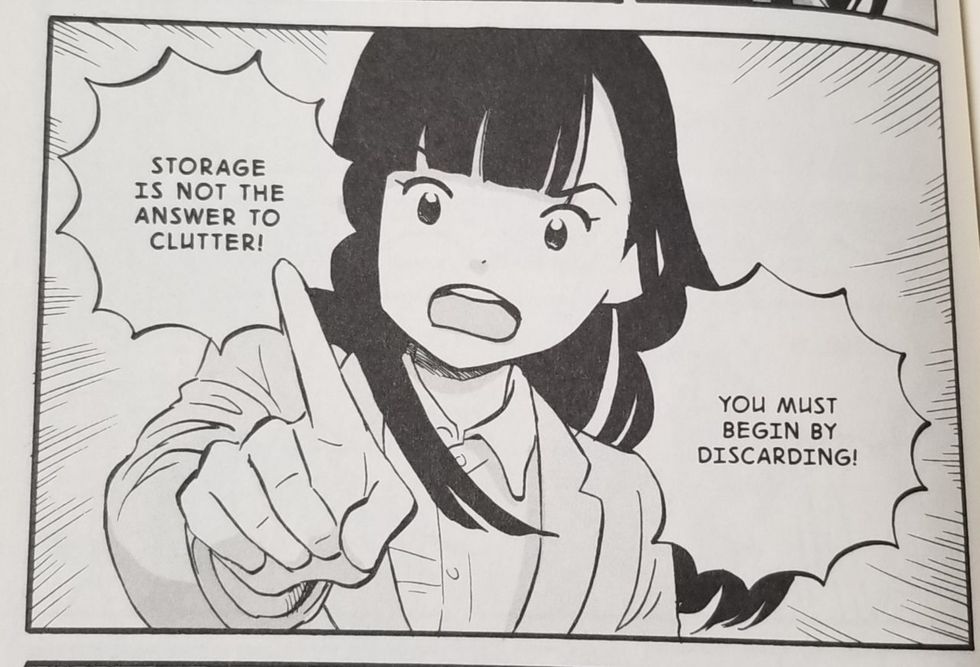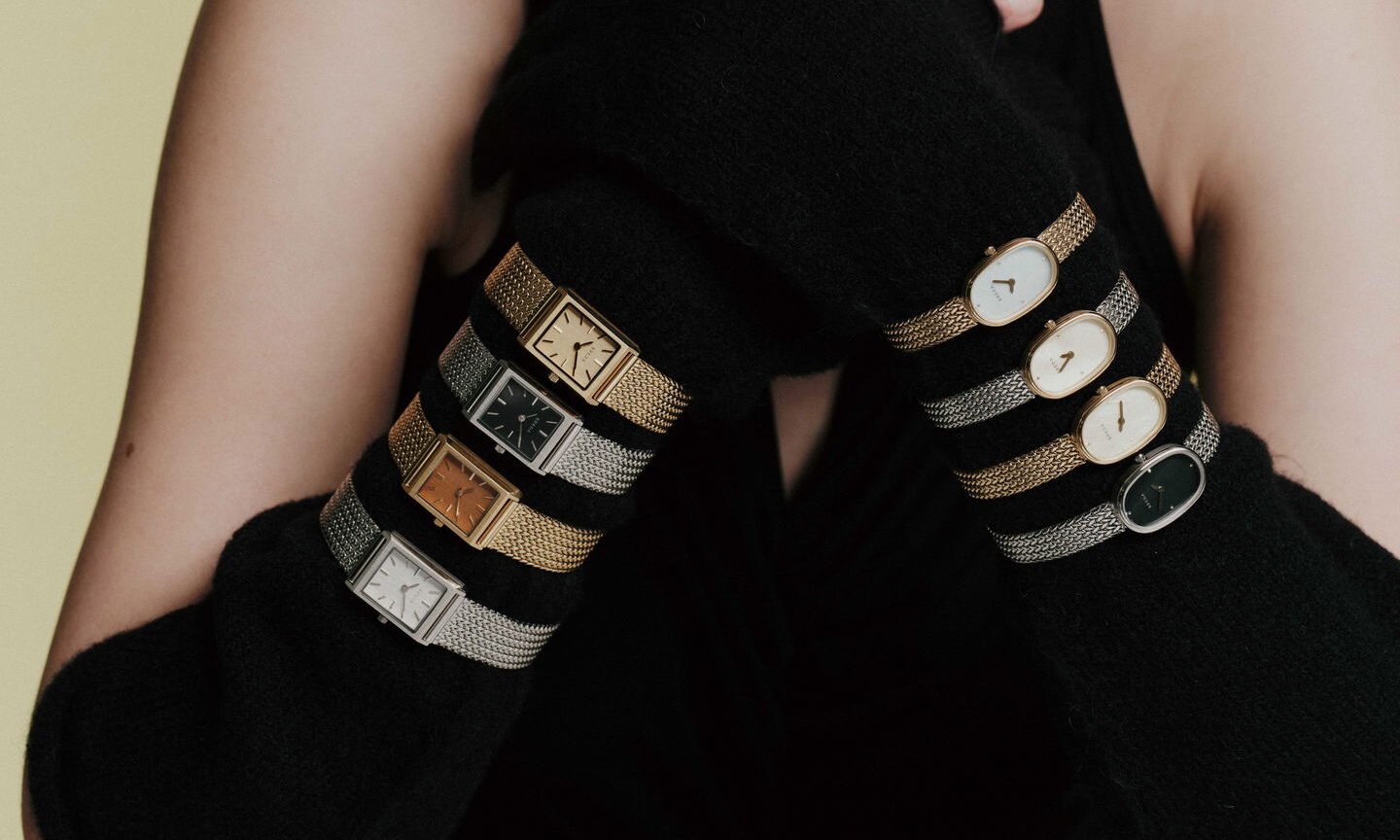CULTURE
The Weird, Heartless Magic of Marie Kondo: The Cleanest Cult To Ever Exist
18 Mar, 19

Marie Kondo arrives at BAFTA
Photo by DFree (Shutterstock)
When you’re finally ready to dispose of your 9th-grade formal wear, that copy of Infinite Jest you should admit you’ll never read, or your creepy, tiny baby teeth tucked underneath your mattress, Marie Kondo wants you to gently stroke each time, thank it for the joy it’s brought to your life, and throw it the fuck away.
With her 2011 book The Life Changing Magic of Tidying Up: The Japanese Art of Decluttering and Organizing, the professional “organizing consultant” turned her KonMari method into global trend based on self-improvement and Shinto-inspired philosophies. Now, with her own Netflix series Tidying Up with Marie Kondo, her strident rules about only keeping belongings that “spark joy” has become a phenomenal tool for the messy, a full-time lifestyle for the dedicated, and a religion for the obsessed. But are the basic tenets of the KonMari method right for everybody, or are they too rigid? When did speaking to inanimate objects become a mindful practice instead of a cry for help? Let’s examine the practical benefits of this “spark joy” mentality, as well as its creepy, cultish undertones.
1. The Purge: the first principle in Kondo’s book is simply to “commit yourself to tidying up.” The KonMari method purports to eliminate the need to ever declutter again because everything you own will be in continual use. But this leaves little room for sentimentality. Your late grandfather’s rickety cigar box full of his most prized possessions? Trash it. Those pen pal letters from your “girlfriend in Canada?” Ditch them: a prisoner probably wrote them. And when it comes to photographs, Kondo recommends keeping no more than five per major life event. Your childhood’s over; grow up.
While this anti-sentimentality could benefit people who glorify the past with an unhealthy sense of nostalgia, it’s not designed for those who rely on objects for strong visual memories or those who’d rather stare at fond photographs than another goddamn succulent plant.
Tidying Up with Marie Kondo | Official Trailer [HD] | Netflixyoutu.be
2. Sound Vague but Super Important: While visiting comedian Hasan Minhaj on his clearly half-serious invitation, Kondo says in Japanese, “What I really want people to understand is what tidying means, fundamentally. That’s my gift to you.” But, she doesn’t directly explain what that meaning is, a pattern evident in most of her advice. Much of the force behind the KonMari method comes from its devout followers—sort of like, you know, a cult. People who laud the KonMari method spread the book’s self-help guarantees, from improved time management, reduced stress, and improved focus and concentration to clearer career direction and enhanced mental and physical health.
Marie Kondo Sparks Joy with Hasan Minhaj | Tidying Up | Netflixyoutu.be
3. All Objects Are Alive: Harder to grasp in the KonMari philosophy is the Shinto-Animist belief that all possessions have spirits, or as Kondo puts it, emotions. Rather than treating a purge like it’s throwing away a lifetime of belongings, Kondo urges you to consider your items’ hurt feelings when they’re stowed away in the back of a closet. Seriously, she advises people to gently stroke and speak to their clothes while they’re deciding what to throw away. On her Netflix special, she tells one couple that “it’s important to convey love for your clothes from the palm of your hands. By doing this you will start to like folding your clothes. Folding is not just making your clothes smaller. It is actually an important opportunity to talk to your clothes and thank them.” Why is this important? According to the KonMari method, gratitude is everything. You should feel thankful for what you own (a fair point), and the way she suggests doing that is to personally thank your belongings for what they’ve brought to your life before tossing them—and, of course, be sure to buy her special “gratitude journal,” “Spark Joy Every Day,” to keep track of your tidying journey. You can also purchase her graphic novel, The Life-Changing Manga of Tidying Up: A Magical Story, because you’re not fully equipped to battle capitalism until you buy all the expert’s guides.
4. Creepy Exoticism: This one isn’t all Kondo’s fault, but an undeniable appeal to western audiences has been her style of pseudo-philosophizing about basic Shinto principles. And that’s pissed some Japanese citizens off. As the oldest spiritual belief in Japan, Shinto teaches respect for places of worship, family ancestors, and sacred objects with emphasis on ritualistic greetings and modest styles of dress in certain environments. As an organizing consultant, Kondo decided to apply these principles to her everyday clients’ homes and effectively turned one of the world’s most ancient religions into a Netflix show. While her simple method stresses “tidy by category, not by location” and “imagine your ideal lifestyle,” she blatantly riffs on Shinto habits in the ways she “thanks” a home, strokes objects to “wake them up,” and urges people to declutter their homes in order to “declutter their hearts.”
5. Sexism: One of the most glaring characteristics of all of the clients Kondo works with on Tidying Up is their outdated gender roles. All the heterosexual couples featured in the eight-episode series agree that the onus of decluttering falls on the woman, while the man embodies an “aw, shucks, I don’t even see a mess” attitude. Kavita Daiya, director of Women’s, Gender, and Sexuality Studies Program at George Washington University, takes great issue with the series, criticizing, “It looked like a lot of women that they were featuring had internalized the idea that they were responsible for the kitchen, the cooking, and the organization (of space and clothes), and that it was a reflection of their own self, their own competence – in a way that the men didn’t internalize it.” Twitter agrees, spotlighting the two homosexual couples featured in the show as the highlights of the series and the gross kind of true love that’s probably as genuine as it looks.
While USA Today has broken down each episode’s eerie depiction of gender biases, how much of that is under Marie Kondo’s control? As the sole creator and writer of the series, as well as one of only two executive co-producers, she has a lot of say. In fact, that’s the only stitch of gender equality implied by the KonMari method. Her book still warns women (and women alone) to never allow themselves to become unattractive: “If you are a woman, try wearing something elegant as nightwear. The worst thing you can do is to wear a sloppy sweat suit. I occasionally meet people who dress like this all the time, whether waking or sleeping. If sweatpants are your everyday attire, you’ll end up looking like you belong in them, which is not very attractive.”
To be fair, Kondo has received plenty of criticism. After recommending that her clients dispose of many of their books on the fifth episode of Tidying Up, Twitter came after her with their torches. Her personal preference for owning no more than 30 books at one time outraged people far more than the cultish aspects of the KonMari method. From being called “a monster” touting “woo-woo nonsense” to receiving thinly veiled racial insults, Kondo experienced enough backlash to release a statement addressing how her method has been misunderstood. She toldIndiewire: “I do think there is a misunderstanding of the process, that I’m recommending that we throw away books in the trash or burn them or something…The most important part of this process of tidying is to always think about what you have and about the discovery of your sense of value, what you value that is important. So it’s not so much what I personally think about books. The question you should be asking is what do you think about books.”
Whether Marie Kondo is the cleanest guru the world’s ever seen or the next celebrity cult leader, business is thriving for the “tidiest woman in the world,” with a six-month waitlist to work with her Japanese agency. As a guest on The Late Show, she was teaching Stephen Colbert how to bow before his desk and verbalize his gratitude for the recording studio when Colbert voiced how most of America feels about Kondo: “I don’t understand anything you’re saying when you say it. But even if you had no translator, I would follow you to a cult compound and never leave.”
Marie Kondo Tidies Up Stephen’s ‘Late Show’ Deskyoutu.be
Down the Rabbit Hole: Exploring Weird YouTube
I’m an Asian Woman on Tinder: An Analysis of My Inbox
This Week in Internet Hell: Evil Spirits for Sale and a Good Kind of Stroke
- Netflix is Raising its Prices, Possible Forever – Popdust ›
- Alison Roman, Chrissy Teigen, and Cancel Culture – Popdust ›
- 7 Reasons I Disagree with Marie Kondo’s “The Life-Changing Magic … ›
- Tidying Up with Marie Kondo: Netflix’s new star, explained – Vox ›
- Marie Kondo, Tidying Up and the Ruthless War on Stuff – The New … ›
- The dark side of Marie Kondo living ›
- Keep your tidy, spark-joy hands off my book piles, Marie Kondo … ›
- Tidying Up With Marie Kondo review – TV destined for the bin bag of … ›
- How Marie Kondo Konmari Method Is Tidying Up America ›
- Why decluttering guru Marie Kondo is wrong | The Star ›














